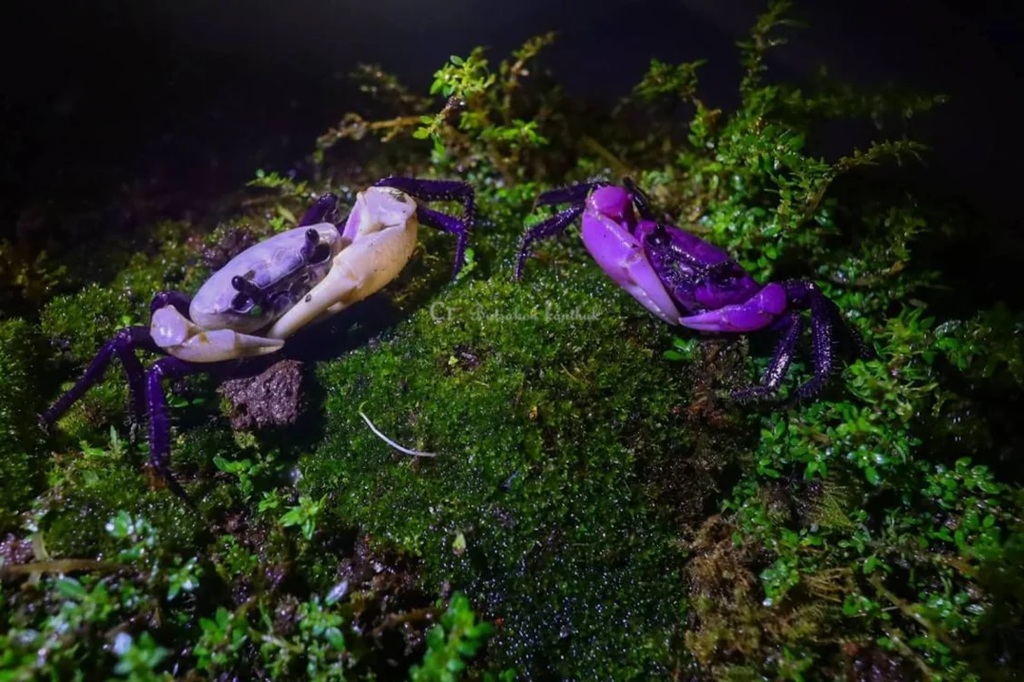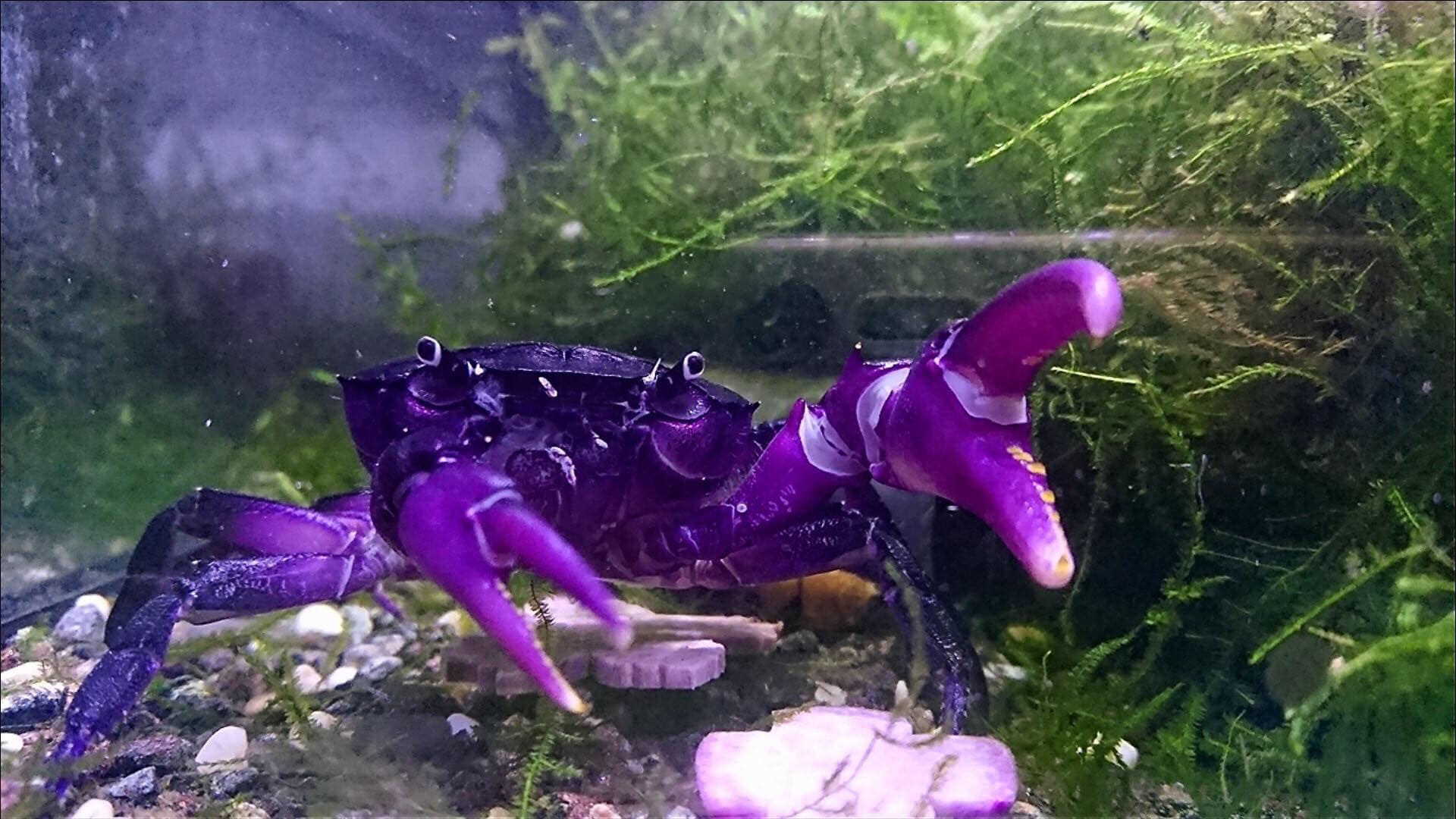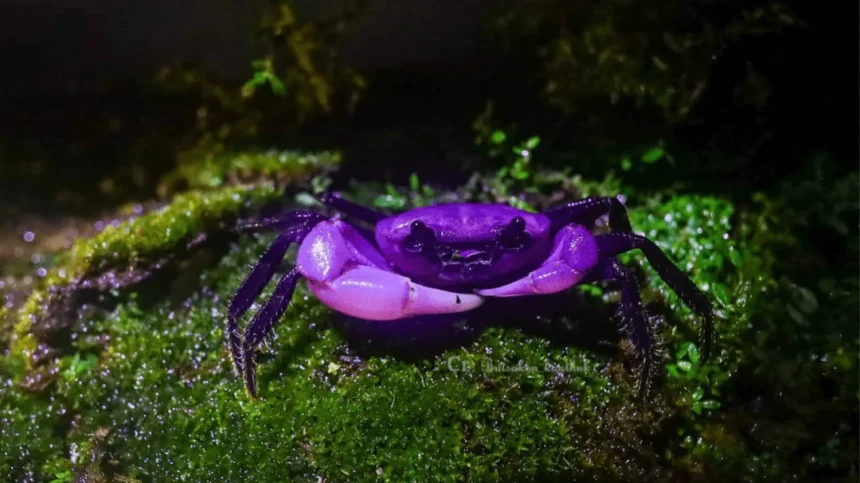PHETCHABURI – Conservationists and wildlife enthusiasts are buzzing after a rare purple crab appeared in Kaeng Krachan National Park, Thailand’s biggest national park and a recognized UNESCO World Heritage Site.
Park rangers recorded this striking sighting during routine checks, spotting the Sirindhorn Crab, also called the “King Crab” or “Princess Crab” by locals. The Department of National Parks, Wildlife and Plant Conservation called this moment a “precious gift from nature,” highlighting the crab’s rarity and what its presence says about the health of the park.
The Sirindhorn Crab (Phricotelphusa sirindhorn) is a freshwater species named in tribute to Princess Maha Chakri Sirindhorn. It usually lives in the rocky streams and waterfalls in western Thailand. While it’s related to the more familiar panda crab, known for its black and white markings, the purple variant appears very rarely.
Fewer than ten sightings have been confirmed since it was first found in 1986 in Ngao Waterfall National Park. This latest record, made on 31 July 2025 at the Panoen Thung viewpoint, has caught worldwide attention, with clear images of the crab’s purple and white shell widely shared on social media.

Magical and Otherworldly
Mongkhon Chaiphakdee, a park official who helped document the find, described it as “spotting a jewel in the forest.” The shell’s vibrant purple stands out among the mossy rocks and flowing waterfalls. At full size, the crab measures less than one inch.
The photographs, posted on the park’s official Facebook page, have caught the public’s imagination, prompting many to call the animal “magical” and “otherworldly.”
Kaeng Krachan National Park neighbours Myanmar and stretches over a vast area teeming with life. Animals like leopards, elephants, king cobras and rare birds share this space.
The park became a UNESCO World Heritage Site in 2021, recognized for its forests, misty hills and clear waterfalls. The continued presence of the Sirindhorn Crab tells scientists a lot about water quality and habitat balance, showing that the area is still unspoilt.
Chaiphakdee said, “The survival of this rare crab proves our conservation work pays off. It reminds us how crucial it is to protect these forests for the next generation.”
So what gives this crab its brilliant purple colour? Hendrik Freitag from the Senckenberg Museum of Zoology suggested in a 2012 study that the cause is likely random evolution, not a clear survival advantage.

Purple Crab Under Protection
The purple colouring might help with recognizing members of the same species, especially in the rocky, shaded crevices where these crabs live. These vibrant shells may also play a role in attracting mates or helping individuals stand out in their dark environment.
The true reasons remain under study, but the crab’s uncommon looks make it even more interesting for both scientists and nature lovers.
This recent discovery has put the need for protecting Thailand’s natural wonders back in the spotlight. The Sirindhorn Crab is protected under the Wildlife Preservation and Protection Act of 2019, and is especially sensitive to changes like habitat loss, pollution or shifts in climate.
Even minor impacts could put this rare species at risk. Park authorities stress that visitors should not disturb these animals and must respect the fragile habitats they rely on.
A spokesperson from the Department of National Parks said, “These crabs stand as a symbol of Thailand’s wildlife and culture. Their survival depends on all of us valuing and protecting our natural resources.”
The global reaction to the purple crab has been one of surprise and wonder. People on X have called it a “rainbow in the animal kingdom” and a “jewel-toned marvel.”

Parks Hidden Gem
The photos have helped shine a light not just on Kaeng Krachan’s hidden gems but also on the wider need to protect rich habitats everywhere. Researchers get another chance to understand this rare purple crab, which is much less studied than its black-and-white cousin.
Kaeng Krachan National Park remains a strong example of how nature can be protected and thrive. The Sirindhorn Crab’s appearance proves that even in places scientists know well, discoveries can still be made.
For now, the “Princess Crab” carries on capturing the imagination of visitors and experts, seen as a rare delight from Thailand’s wild countryside.
For more details on Kaeng Krachan National Park or to support local conservation efforts, contact the Department of National Parks, Wildlife and Plant Conservation or visit their website.














